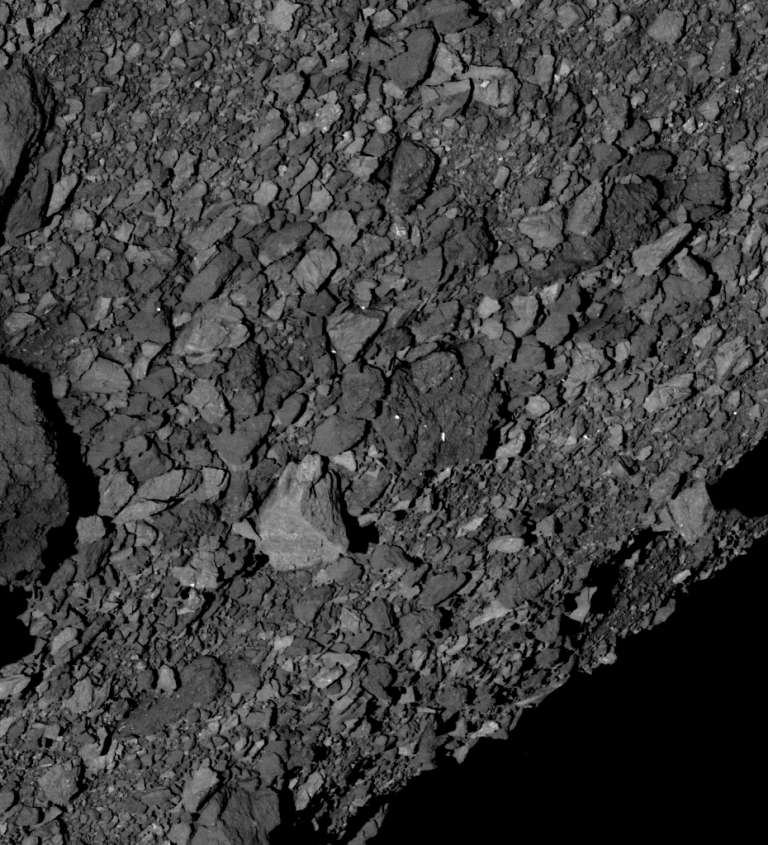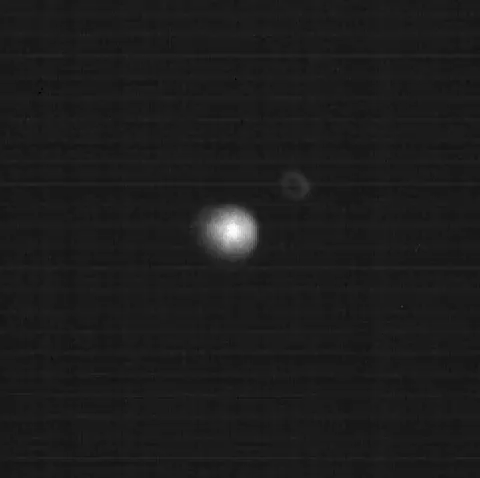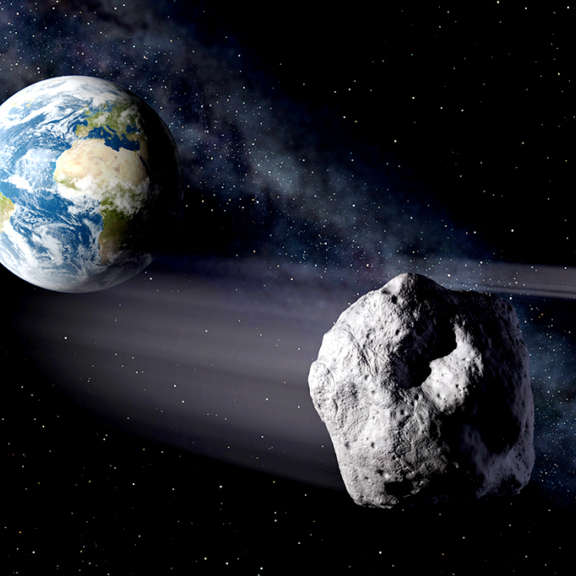Kate Howells • Aug 20, 2024
What would happen if we nuked an asteroid?
If an asteroid were discovered on a collision course with Earth, what would we do?
Thanks to blockbuster movies like “Armageddon” and “Deep Impact,” most people might assume that the best course of action would be to use a nuclear weapon to blow the space rock into smithereens. But while this solution would be appropriate for some situations (without the need for a spacecraft crewed by Bruce Willis, of course) a nuclear explosion isn’t always the best option for asteroid deflection.
How a nuke might affect an asteroid
How exactly an explosion on, near, or beneath the surface would affect an asteroid would depend on the asteroid’s characteristics. Asteroids can vary in their size and structure, from dense, metallic asteroids like Psyche to rubble-pile asteroids like Bennu.

Depending on the size and composition of the asteroid and the power of the nuclear device, an explosion could potentially shatter an asteroid into pieces. Whether the fragments missed the planet altogether or continued on the same impact trajectory might depend on the same factors — size, composition, and power of the explosion. Although some fragments might be small enough to burn up in the atmosphere, other chunks of asteroid could still pose a serious threat and might rain down over a wide area of the planet.
Another approach to nuking an incoming asteroid would be to detonate the nuclear device near, rather than on, the surface of the asteroid. This way, the explosion could cause the asteroid’s surface material to vaporize and ablate, creating a thrust that could alter the asteroid's trajectory without causing significant fragmentation.
Any attempt to destroy or divert an asteroid using nuclear detonations would likely require a mission to study that asteroid up close beforehand to find out what it’s made of, how it’s structured, and what kind of force would be needed to effectively deflect or destroy it without turning one impact threat into many.
International treaty concerns
The use of nuclear weapons in space is strictly prohibited under the international Outer Space Treaty, and for very good reason. During the Cold War, the Soviet Union and the United States competed to develop powerful rockets and nuclear weapons, going so far as to test nuclear weapons in space. In response to this arms race, the United Nations drafted the Outer Space Treaty, to which all major spacefaring nations have agreed.
While sending a nuclear weapon into space for asteroid deflection is clearly not the same as using a nuclear weapon for war, it’s possible that the use of nuclear arms in space could create geopolitical tensions or set a bad precedent for future military activities in space. This is one reason why the nuclear option is not necessarily the most straightforward way of dealing with an asteroid threat.
Other options are out there
Luckily, there are other ways of deflecting an asteroid that do not pose the same challenges as nuclear detonations.
One technique is the slow gravity tractor, where a massive spacecraft is launched from Earth to meet the asteroid and follow next to it, using the spacecraft’s own gravity to pull the object’s path away from a future collision. Another technique is laser ablation, where one or many spacecraft apporach the asteroid and use lasers to vaporize rock to create jets that slow or speed the object’s path around the Sun. The Planetary Society worked with a team at the University of Strathclyde in Scotland to develop early lab research into this technique, through their Laser Bees project.
There is also the kinetic impactor technique, where one or more spacecraft slam into the asteroid to impart a little force to shift its orbit. NASA’s DART (Double Asteroid Redirection Test) mission proved the effectiveness of this technique in September 2022 when the spacecraft intentionally crashed into the asteroid Didymos' small moon, Dimorphos. The crash changed the time it takes Dimorphos to orbit Didymos by 33 minutes, proving the kinetic impactor technique works to change an asteroid’s trajectory through space.

A big blast for a big rock
While a kinetic impactor like DART could be effective for most asteroid sizes, the truly behemoth space rock might not be nudged enough by even the largest spacecraft we could send its way, especially if the asteroid were near enough to Earth to require a large change in trajectory. This kind of scenario might call for a nuclear detonation able to impart a larger change in trajectory to a more massive object.
Luckily for Earth, bigger asteroids are much easier to spot from afar. Researchers are confident that they’ve found over 80% of the largest asteroids in the Solar System, and none are on a collision course with our planet.
A last resort?
Even with other deflection technologies in development, it’s extremely important to find incoming asteroids as early as possible. If we detect a threatening asteroid many years before a predicted impact, we wouldn’t have to deflect it much. Just a few minutes’ change in its arrival time at Earth’s position could be the difference between an impact and a near miss.
A tiny impulse to an asteroid, many orbits before a predicted impact, could prevent the impact from happening. Deflection techniques like DART would be best suited to this kind of situation. However, if a dangerous asteroid were discovered, it would still take years to build and launch whatever deflection mission humanity decided to use.
If we do ever find an asteroid that’s on course to impact Earth in the near future, the nuclear option is likely the best we currently have. A 2021 study showed that a nuke detonated next to an asteroid 100 meters (328 feet) wide, at least two months before impact, could blast 99.9% of the asteroid’s mass out of Earth’s way.
The most important thing we can do to address the asteroid threat right now is to find, track, and study the asteroids that come into Earth’s orbital vicinity. The sooner we find something dangerous in the skies, the more options we’ll have for dealing with it.
Defend Earth
How The Planetary Society works to decrease the risk of Earth being hit by an asteroid or comet.
Support our core enterprises
Your support powers our mission to explore worlds, find life, and defend Earth. You make all the difference when you make a gift. Give today!
Donate

 Explore Worlds
Explore Worlds Find Life
Find Life Defend Earth
Defend Earth


